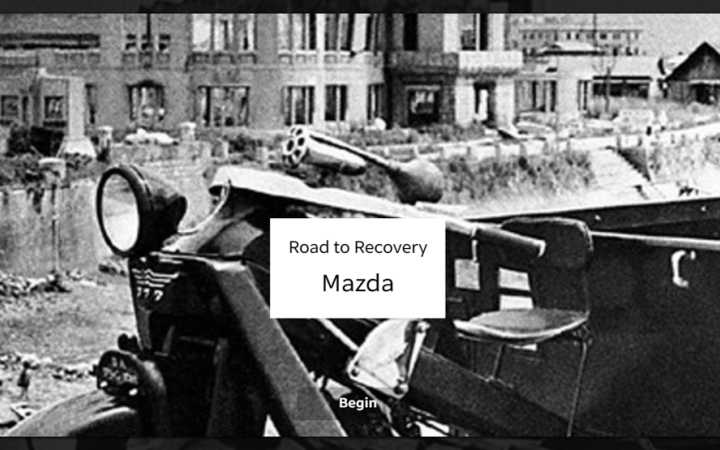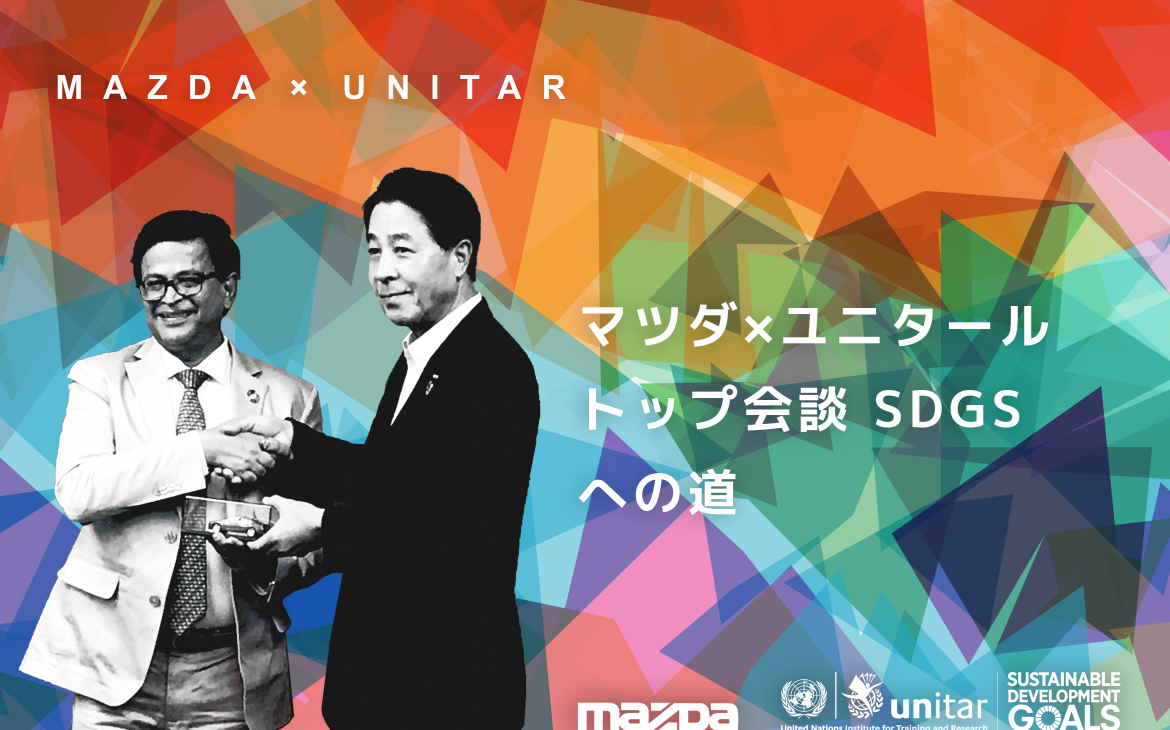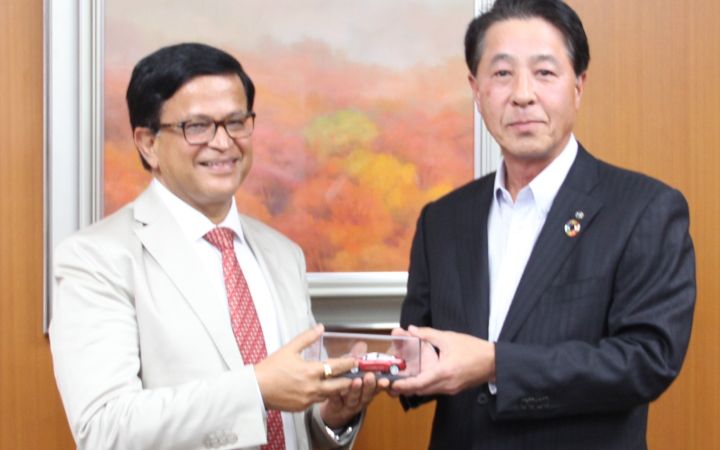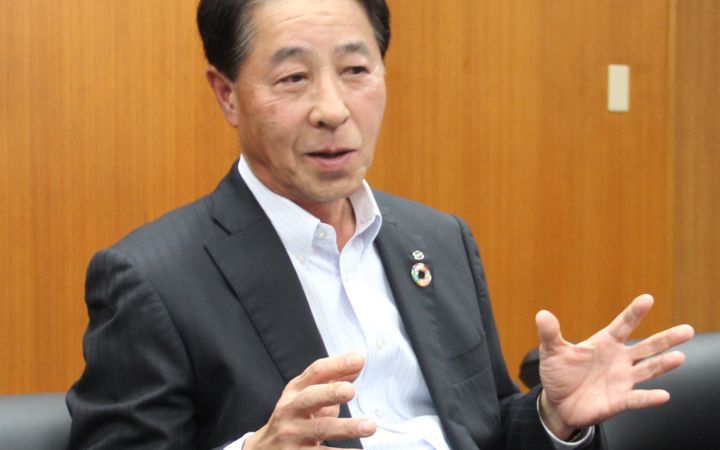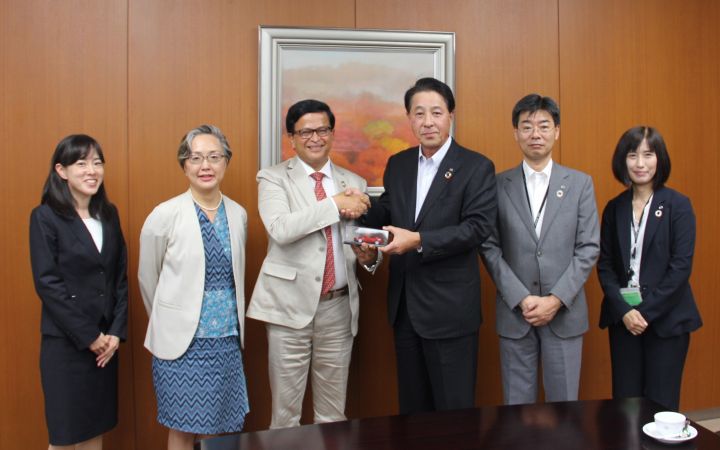11 March, 2021, Hiroshima, Japan - The early months of 2021 have witnessed significant developments in nuclear disarmament efforts, including the entry into force of the Treaty on the Prohibition of Nuclear Weapons (TPNW) and an extension of the Strategic Arms Reduction Treaty (New START) through 2026. At the same time, the COVID-19 pandemic is impeding face-to face meetings between delegates, thus stagnating dialogues on nuclear disarmament. Training in negotiation techniques specific for nuclear disarmament remains an urgent need, however, if we are to maintain the momentum towards a nuclear-free world.
On 2 March 2021, UNITAR Hiroshima Office, Division for Prosperity, launched the 6th year of its Training Programme on Nuclear Disarmament and Non-proliferation. Given the COVID-19 travel restrictions, the programme has been updated with online webinars and EdApp mobile learning. And new content has been added from global experts such as Mr. Tariq Rauf, Consulting Advisor to the Comprehensive Nuclear-Test-Ban Treaty Organization (CTBTO), and from the local community in Hiroshima, a city that stands for peace and reconstruction from the atomic bombing.
Mazda Motor Corporation, headquartered in Hiroshima and which celebrated its 100th anniversary in 2020, has provided valuable content to the programme. This includes photos of the company’s transformation following the 1945 bombing of city, enabling participants to get a sense of the history of Hiroshima’s recovery and the efforts made by individuals and organizations.
Mr. Nikhil Seth, Executive Director of UNITAR, visited Japan in 2019 and had a productive meeting with Mr. Masamichi Kogai, Representative Director and Chair of the Board of Mazda Motor Corporation. The two leaders discussed the Sustainable Development Goals (SDGs), focusing not only on technical solutions to issues such as CO2 emissions, but also on how we can create a more peaceful and just society to better support vulnerable people. With the COVID-19 pandemic, the importance of the SDGs as a road map for the future has become even greater. Mr. Seth, himself an architect of the SDGs, interviewed Mr. Kogai on Mazda’s initiatives to make a difference.
Seth (S): Hiroshima is the City of Peace. We also want it to be the city of SDGs. When global companies and well-known industries adopt the SDGs, it gives me a great hope that other companies will follow their example and promote all the values in the SDGs. Since the UN is present in Hiroshima, and Mazda has its operations here too, it is our hope that this partnership will become strong. May I start with this question: How did Mazda become such a big global brand name?
Kogai (K): Mazda celebrated its 100th anniversary in 2020. A significant event in the company’s history was August 6, 1945, the atomic bombing of Hiroshima. Central Hiroshima was totally destroyed, but because Mazda was located far from the hypocenter, in Aki-gun, we were fortunate enough to escape relatively unscathed; the blast didn’t do much more than break window glass. Just four months after the tragedy, we re-started production of three-wheeled trucks with suppliers’ cooperation.
Hiroshima has long been known for its monotsukuri capabilities, including manufacturing and engineering, and we have a resilient spirit. With the support of various stakeholders, we now have a global production volume of about 1.6 million units a year. We have plants and offices overseas as well. With local people producing and purchasing our products, Mazda’s brand becomes a part of the local community.
S: I was glad to hear that you have adopted “Sustainable Zoom-Zoom 2030.” The year 2030 coincides with the SDGs agenda. What inspiration did Mazda get from the agenda?
K: Sustainable Zoom-Zoom 2030 explains Mazda’s way of thinking and approach regarding infrastructure and technology to help solve problems facing the earth, people, and society. People in particular are central to our philosophy, and we want to offer cars that provide driving pleasure and energize those who use them. For society, we are pursuing safety and peace of mind for people inside and around the vehicle, and we want to create an environment where people everywhere can experience freedom of movement and lead fulfilling lives. For the earth, we will contribute to a future in which people can coexist with a bountiful, beautiful earth through our environmental protection initiatives. We have clear targets for reducing CO2 emissions and are pursuing research and development to achieve them. It is also important to improve CO2 emission at production sites. These initiatives for solving social issues are in line with achieving the SDGs, I believe.
S: The world is worried about climate change. The world’s best scientists are asking everyone to change their lifestyles, to travel more by public transport, to depend less on individual cars. Energy efficiency and reducing emissions are important, too. The Intergovernmental Panel on Climate Change (IPCC) is recommending that we reduce greenhouse gas emissions by 70 to 90% by 2050. What are your thoughts on transitioning to electric vehicles or hybrid vehicles, less dependent on gas?
K: The media tends to discuss what percent electrification you need to have, with only two options: either electric motor or internal-combustion engine. However, our initiatives aim for CO2 emission reductions across the entire vehicle life cycle, not just “tank-to-wheel” when the car is being driven, but “well-to-wheel,” including energy extraction, refinement, and transportation. We aim to reduce our corporate average well-to-wheel CO2 emissions to 50% of 2010 levels by 2030, with an eye to achieving a 90% reduction by 2050.
S: With regards to electric vehicles, there are many problems such as the battery issue — the dependence on rare metals and the disposal of batteries.
K: Making batteries for electric cars releases large amount of CO2. And the disposal of the batteries is going to be costly and emit CO2 too. The business model is not robustly developed yet. We are engaging in research about how to save energy as much as possible throughout the whole manufacturing process, and how the used batteries can be recycled.
S: You talked earlier about safety as one of the issues. One of the targets in the SDGs is reducing deaths and injuries in accidents by 50% by the end of 2020. How are you going to contribute to this goal?
K: We are pursuing research in these fields, but rather than just using as much autonomous driving technologies as possible, it’s important to think about what is necessary to keep people safe. Our current models use fundamental safety technologies such as driving position and visibility to maximize the driver’s ability. We already have advanced safety technology, including a sensing system in our vehicles, which alerts the driver and, if necessary, automatically stops the car if it senses any risks in the surrounding environment. We are currently developing automatic driving technology that will take over if the driver for some reason cannot operate the vehicle, such as a sudden health problem.
S: Japan, like many other countries, has an aging population. Younger people are moving to cities, but many of the older generation are left behind in rural areas. Their ability to drive is limited and their transportation needs are different. Could you talk about how Mazda is helping to provide mobility?
K: We want to help create a society where people with the means of mobility will be able to assist the elderly, rather than just provide the autonomous driving technology for necessary transportation. We are conducting real-world tests in Miyoshi City, a northern area in Hiroshima. It’s a rural area; the train line was suspended, and the aging population isn’t always able to utilize the remaining public transportation options.
We provide our vehicles there. They can make a request for transportation through an app that uses connectivity technology, and then a driver picks them up and takes them to the clinic or station. I think it’s important that a human driver, not a robot-like driverless vehicle, is the one providing support.
S: I want to congratulate you for your thinking on these issues and doing so much. The SDGs are also about economic development and growth, social inclusion, environmental protection, and creating peaceful and just societies. Would you like to share any ideas on those areas on perhaps how Mazda and the United Nations can collaborate in the future?
K: We want Mazda to have a central place in any community that we are part of, both in Japan and abroad. We want to not only develop innovative vehicles and technology, but also to be open to the local community and create strong bonds with all our stakeholders. Our employees need to understand our responsibility to meet the demands and expectations of all Mazda’s stakeholders. We want to support the growth of all our employees, so that Mazda can promote CSR initiatives through our everyday business activities.
S: As UNITAR, we would be very happy to work with you if you want to develop some training modules for SDGs learning. Thank you very much.
K: Thank you very much. There are many organizations which set various indexes. Among them, the 17 clear goals and 169 targets UN’s SDGs are a big help.


